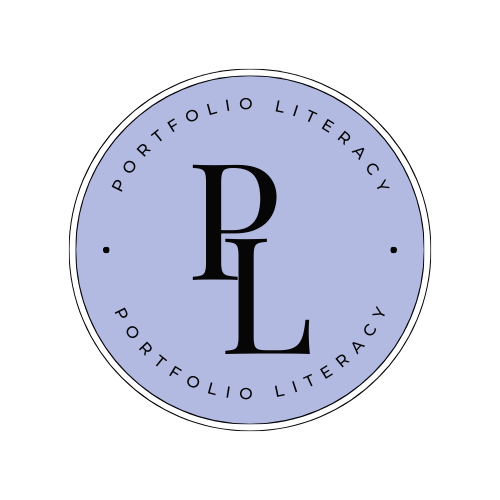As economic uncertainties increase, preparing your portfolio for potential market downturns becomes essential. Recent market volatility has already wiped out $4 trillion in stock market value, highlighting the importance of adding defensive assets to your portfolio in 2025.

Knowing which assets can provide stability during economic turbulence can help protect your wealth and potentially offer growth opportunities even in challenging times. While no investment is completely recession-proof, certain defensive assets have historically demonstrated resilience during economic contractions, making them worthy of consideration as you position your portfolio for what may lie ahead in 2025.
1) Government Bonds
Government bonds, particularly U.S. Treasury bonds, are traditionally considered safe-haven assets during economic downturns. As investors flee equities due to Trump-driven uncertainty, Treasury bonds have seen increased demand, pushing yields lower. Current data shows benchmark 10-year Treasury yields have dropped to about 4.3% (as of March 13th, 2025) as investors seek safety. This inverse relationship between bond prices and yields works to your advantage during market stress.
You can use Treasury bonds as a natural diversifier to stocks in your portfolio. They typically have a negative correlation with equities during recessions, meaning they can help protect your portfolio when stocks are falling. While the economic data isn’t definitively pointing to a recession yet, there are warning signs of a growth slowdown. Fourth-quarter indicators suggest potential weakness ahead, making government bonds an attractive defensive position.
Fixed income investors should prepare for a bumpy ride in 2025, with a wide range of potential outcomes. However, U.S. Treasuries remain one of the safest investments during a recession due to their government backing and liquidity.
For maximum safety, you might consider focusing on shorter-duration Treasuries if you’re concerned about interest rate volatility. Look at 2022 for example, as the Fed raised rates bond prices fell leading to negative returns to both bonds and equities in 2022. Shorter duration bonds will reduce sensitivity to interest rate risks and provide more stability in rapidly changing economic conditions.
2) Utility Sector

Utility stocks are consistently considered defensive investments and often serve as popular flight-to-safety plays during economic downturns. Their essential nature makes them particularly resilient when recession fears mount. These companies provide fundamental services that consumers need regardless of economic conditions. Electricity, water, and gas remain necessities even when households cut back on discretionary spending during tough economic times.
The utility sector has recently demonstrated its defensive characteristics. During recent market volatility, utilities gained 1% while broader markets declined, highlighting their counter-cyclical behavior. Stable cash flows are a hallmark of utility companies, allowing them to maintain reliable dividend payments. There are many utility stocks out there that offer attractive dividend yields around ~3.5%, providing income even when capital appreciation slows.
Regulated pricing models protect many utilities from immediate economic pressures. Your investment benefits from this regulatory buffer that allows companies to pass through costs and maintain profit margins despite inflation or economic challenges.
Your strategy for utility investments should account for each company’s specific factors. The recession resilience of individual utilities depends on their strategic priorities, financial position, operational performance, and regulatory environment.
3) Private Market Assets
Private market assets, including private equity, venture capital, and private credit, can serve as strong defensive assets in 2025 as public markets face heightened volatility. Private equity funds have historically outperformed public equities during downturns, with lower drawdowns and more stable returns. In 2022, for example, while the S&P 500 declined by roughly 18%, private equity buyout funds experienced an average decline of only 5% due to their long-term investment horizon and active management strategies. Given the rising macroeconomic uncertainty in 2025, including geopolitical risks and fluctuating interest rates, private market investments offer a buffer against short-term market swings by focusing on fundamental value creation rather than daily price fluctuations.
Private credit has also emerged as a particularly attractive defensive asset in the current environment. As traditional banks tightened lending due to rising default risks and regulatory pressures in 2008, private lenders have filled the gap, offering higher yields with strong collateral protections. Data from the Alternative Credit Council (ACC) shows that private credit funds delivered an average annualized return of 8-10% over the past decade, with significantly lower correlation to public equities. In a market where public stock valuations are fluctuating and fixed-income yields remain uncertain, private credit strategies focused on middle-market lending and distressed opportunities present a compelling case for investors seeking both income and downside protection.
4) Consumer Staples
Consumer staples represent companies that produce essential everyday items that people need regardless of economic conditions. These include food, beverages, household goods, hygiene products, and basic necessities that consumers typically cannot cut from their budgets.
During economic downturns, consumer staple stocks tend to outperform as demand for these products remains relatively stable. When recession fears loom, investors often rotate into these defensive sectors for protection against market volatility. You can gain exposure to consumer staples through individual stocks or sector-specific ETFs. Many companies in this sector have long histories of paying and increasing dividends, providing income even when share prices stagnate.
The technical advantage of consumer staples lies in their low beta coefficients, typically below 1.0, indicating less volatility than the broader market. Their earnings streams tend to be more predictable and less cyclical than discretionary consumer goods. Consumer staples ETFs offer diversified exposure across multiple companies, reducing single-stock risk while maintaining the defensive characteristics of the sector. They’re considered among the most recession-proof investment options for navigating economic uncertainty.
5) Dividend Stocks
Dividend stocks have emerged as a defensive strategy amid market volatility in 2025. As investors seek stability during economic uncertainty, these income-generating equities are gaining renewed attention. Companies that consistently pay dividends tend to be well-established with stable cash flows, making them potentially more resilient during downturns. You’ll find that these businesses often have lower debt levels and stronger balance sheets than their non-dividend paying counterparts.
When selecting dividend stocks, focus on companies with sustainable payout ratios and histories of maintaining or increasing dividends during previous recessions. The dividend yield provides a cushion against price volatility, offering returns even when share prices decline.
The compounding effect of reinvesting dividends can increase your total returns over time by increasing your position size. However, a defensive dividend strategy can be to use the dividend income to add to another position, avoiding concentration long term.
6) High-Quality Bonds

High-quality bonds can serve as crucial defensive assets during economic downturns. When recessions hit, investors typically flock to safety, driving up demand for investment-grade corporate bonds and Treasuries.
These bonds offer relatively stable income streams through regular interest payments. During market turbulence, this predictable income becomes increasingly valuable to investors seeking reliability. The fixed income market outlook for 2025 appears promising, with higher yields making bonds a strategic choice for navigating rate changes. You can benefit from this improved risk-reward profile compared to recent years.
Credit quality becomes paramount during recessions. Investment-grade corporate bonds from financially sound companies with strong balance sheets tend to withstand economic pressures better than their lower-rated counterparts. High-quality bonds are expected to perform well in 2025, though performance will likely vary across industries. You should consider bonds from sectors less sensitive to economic cycles, such as utilities or consumer staples.
The technical advantage of quality bonds lies in their lower default risk. While yields may be somewhat lower than high-yield bonds, the trade-off provides significantly improved safety during economic contractions.
Bond laddering—purchasing bonds with staggered maturity dates—can help you manage interest rate risk. This strategy provides regular opportunities to reinvest at prevailing rates while maintaining consistent income. You can preserve purchasing power while benefiting from the defensive characteristics of bonds.
